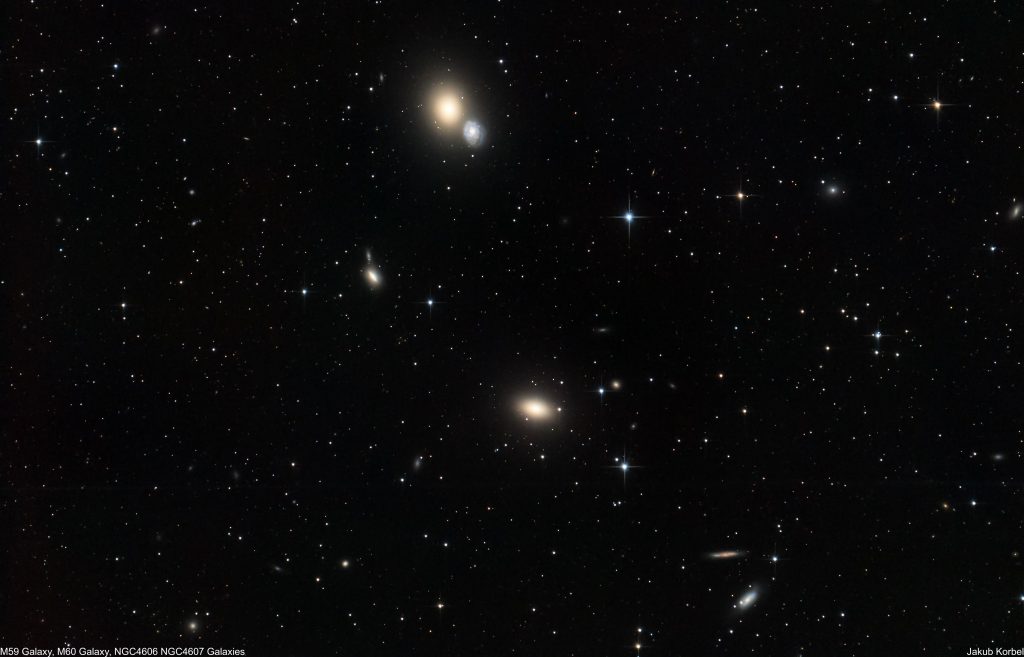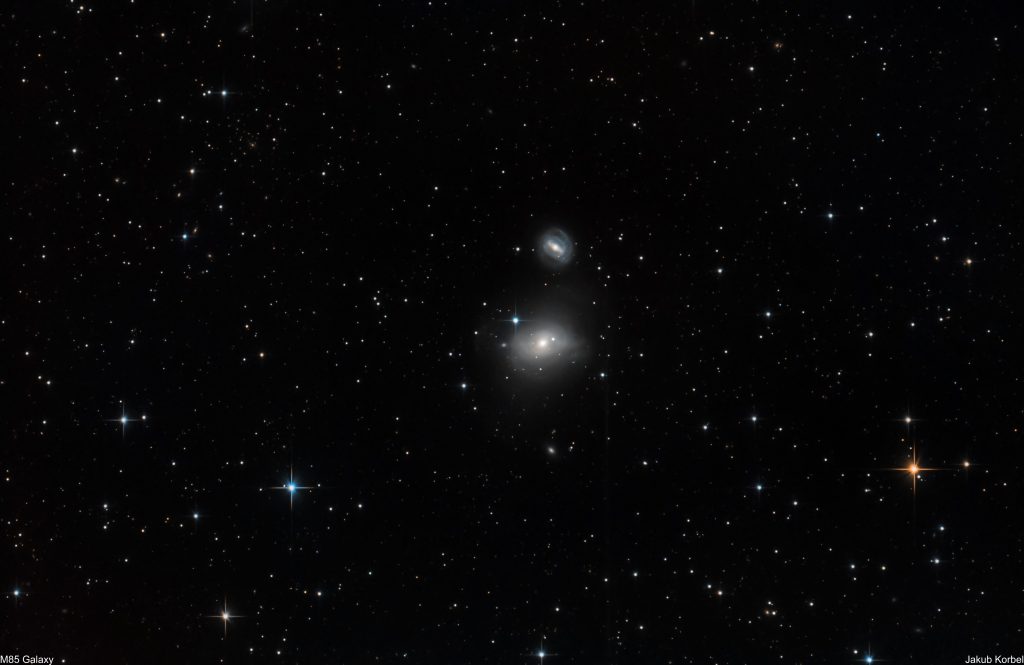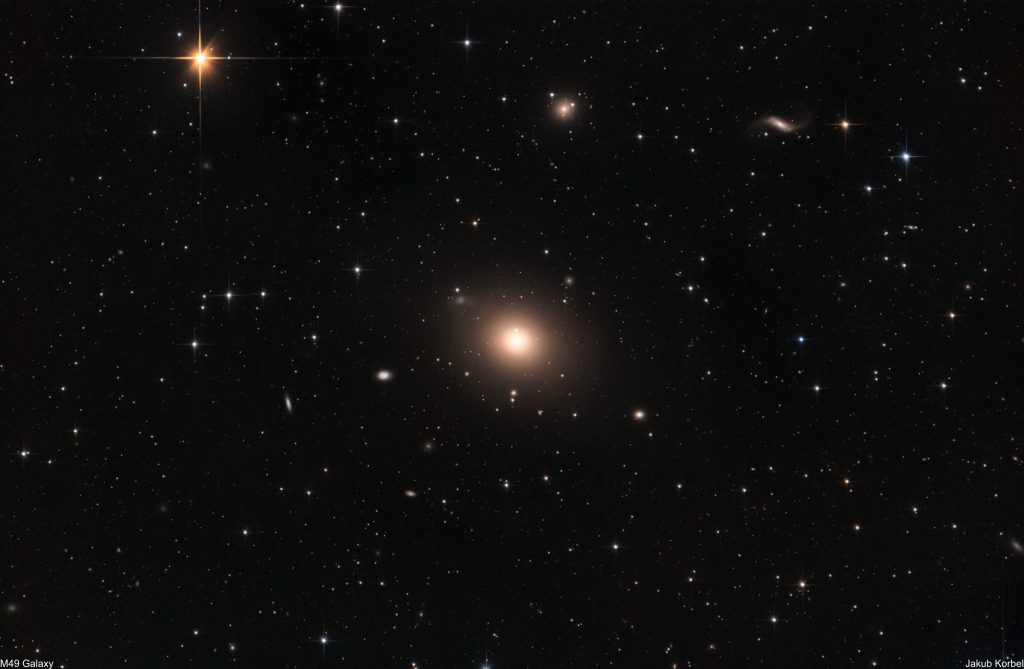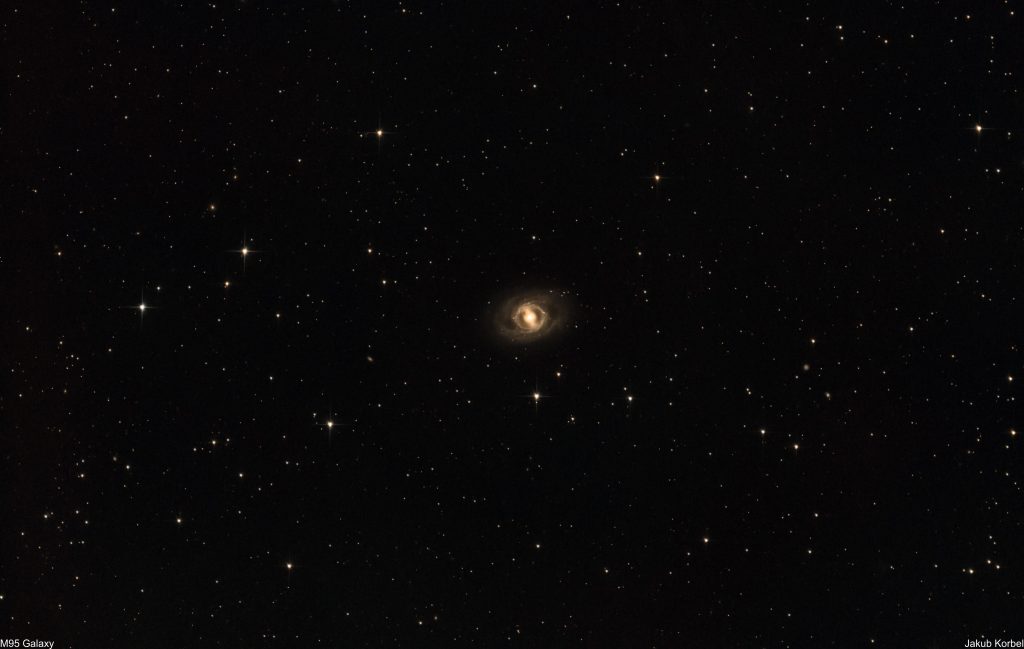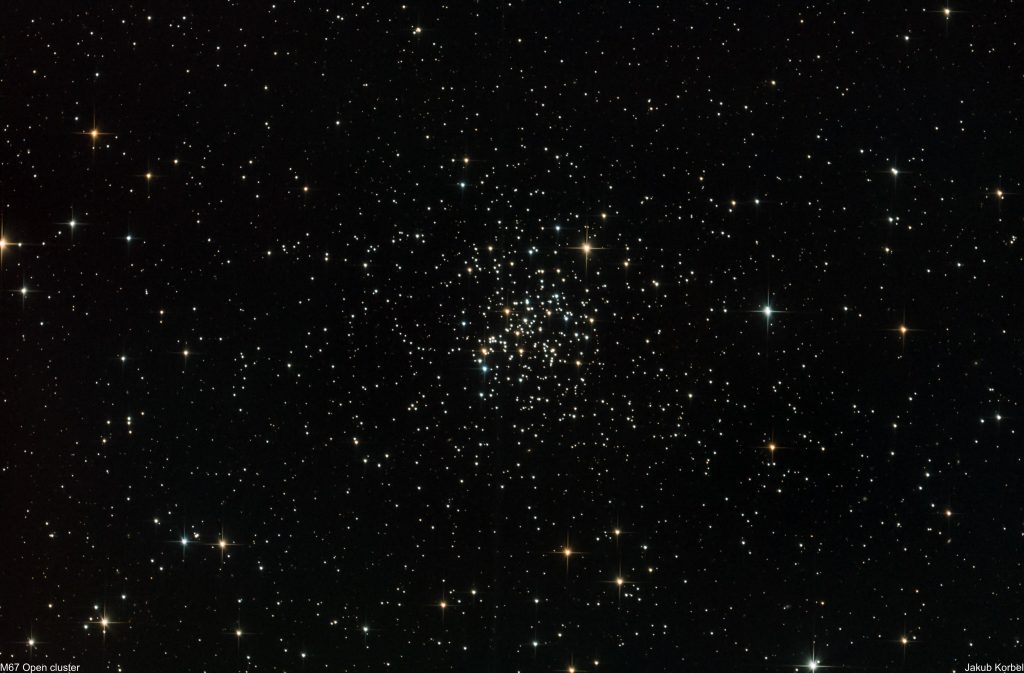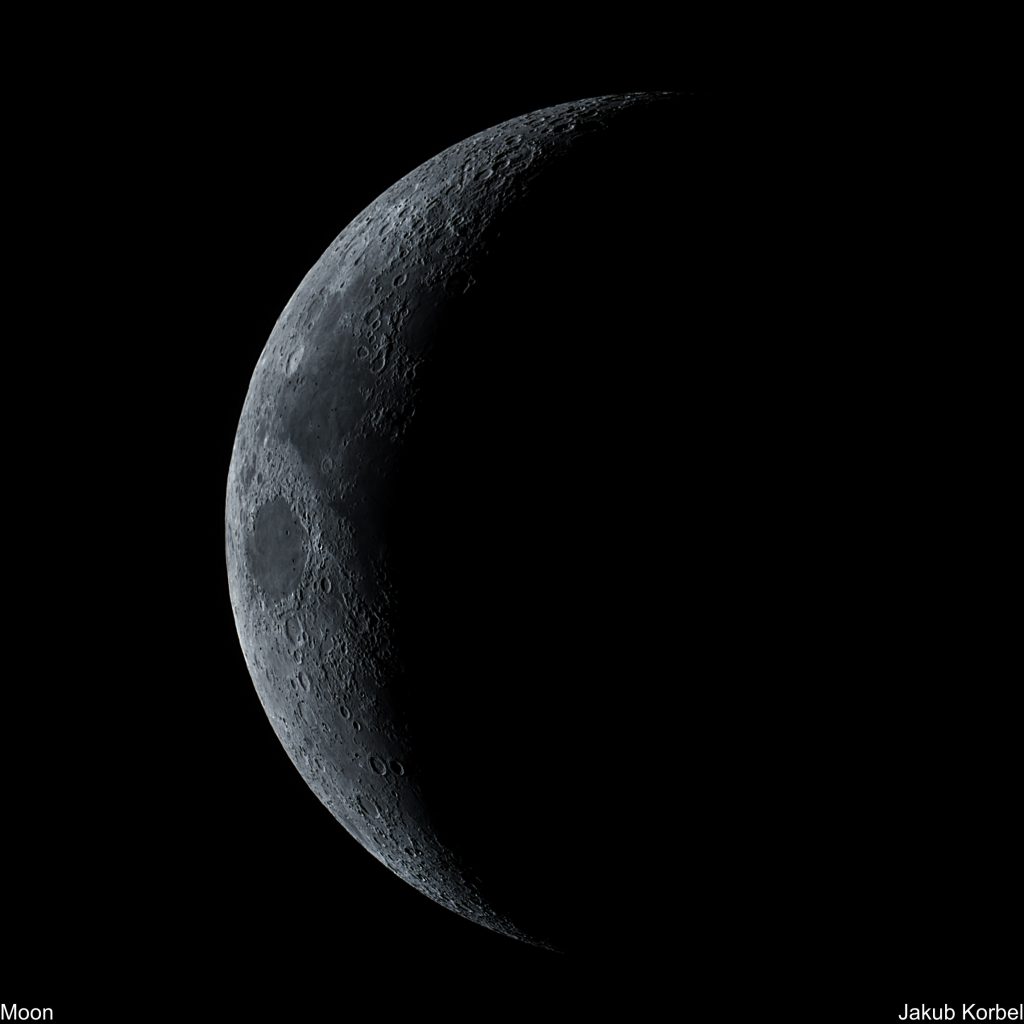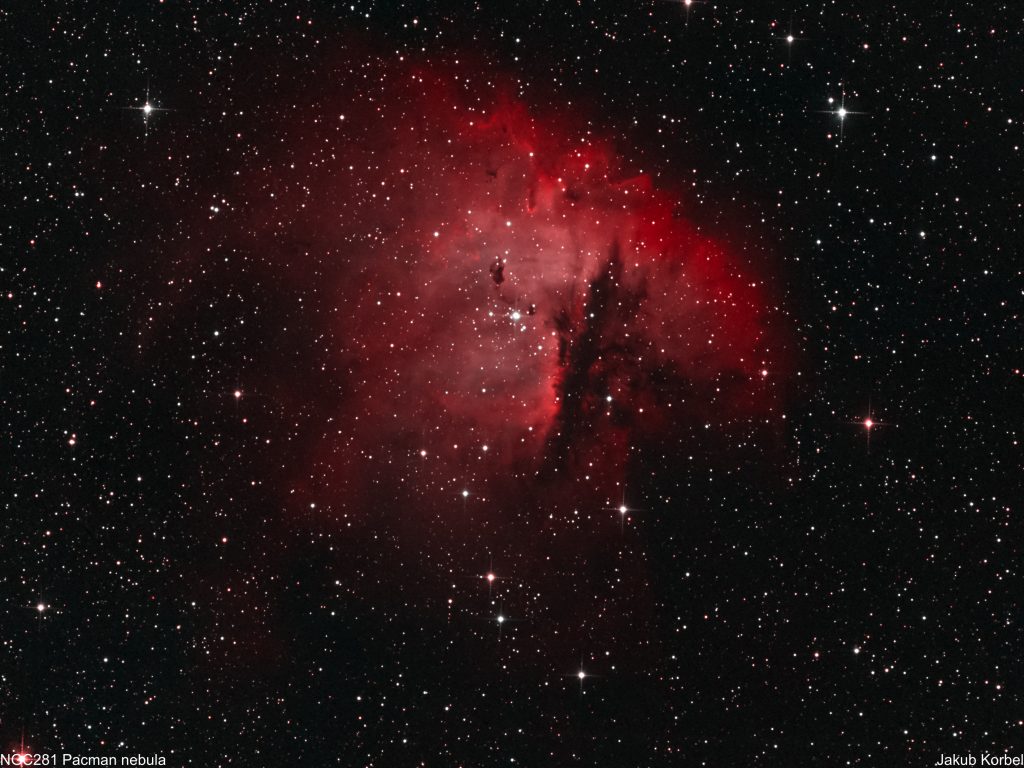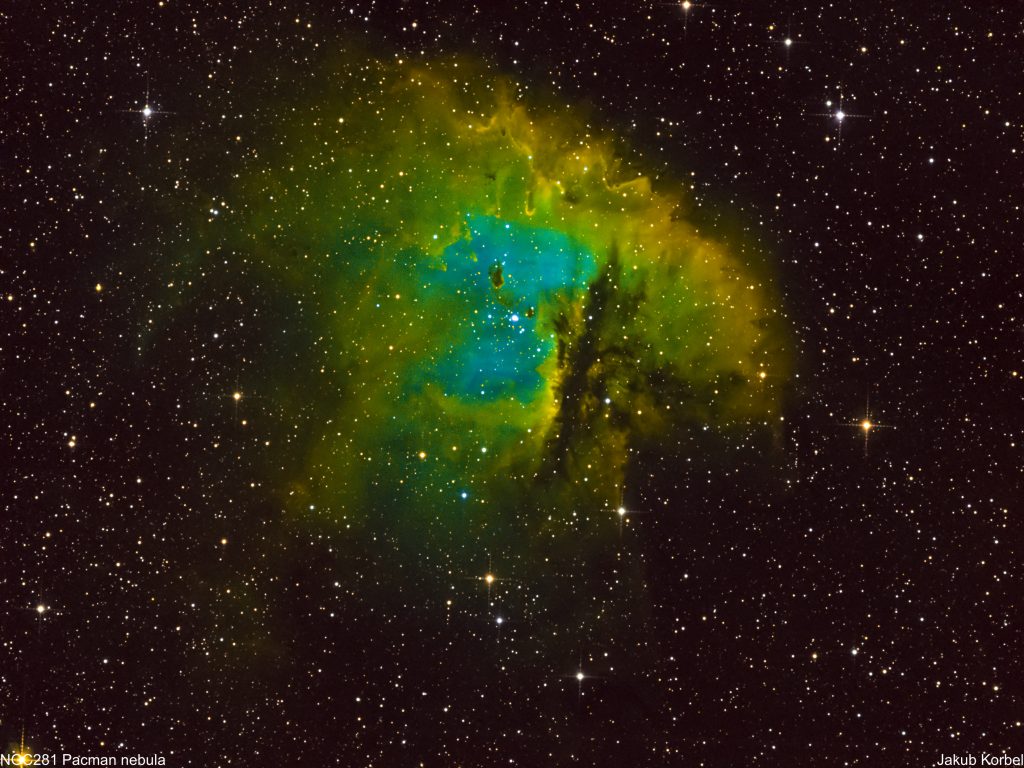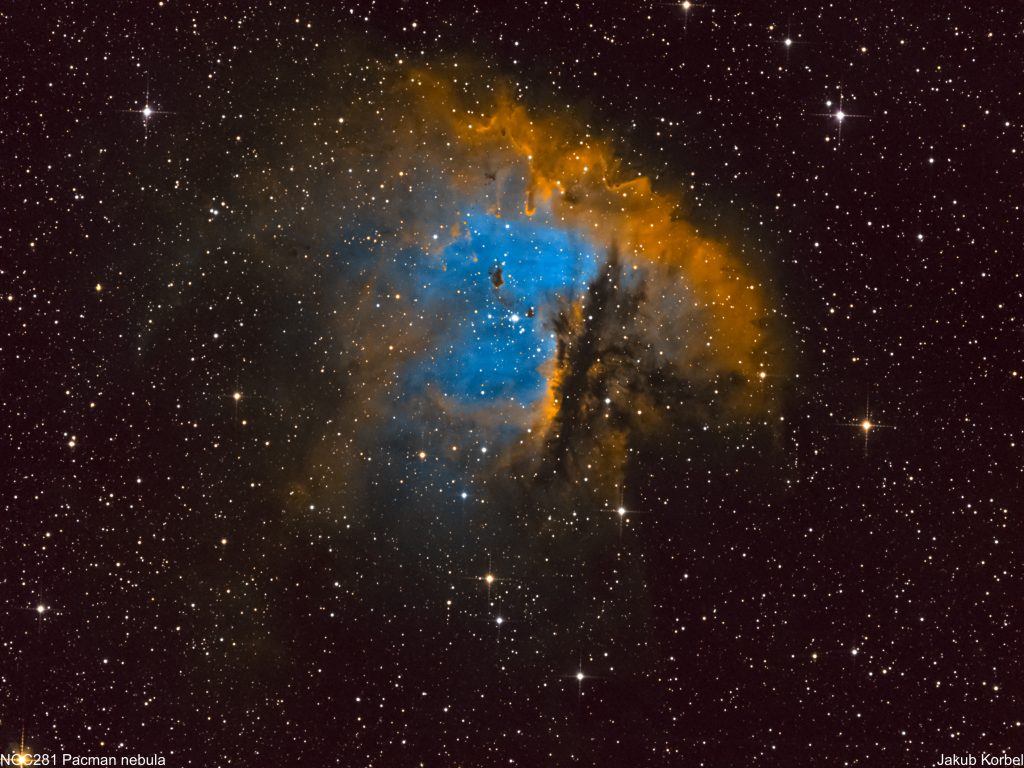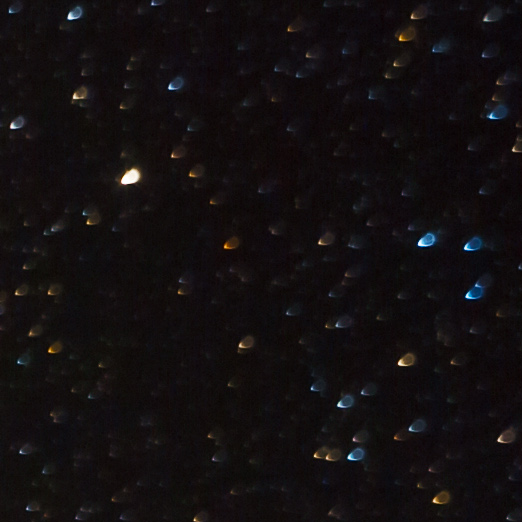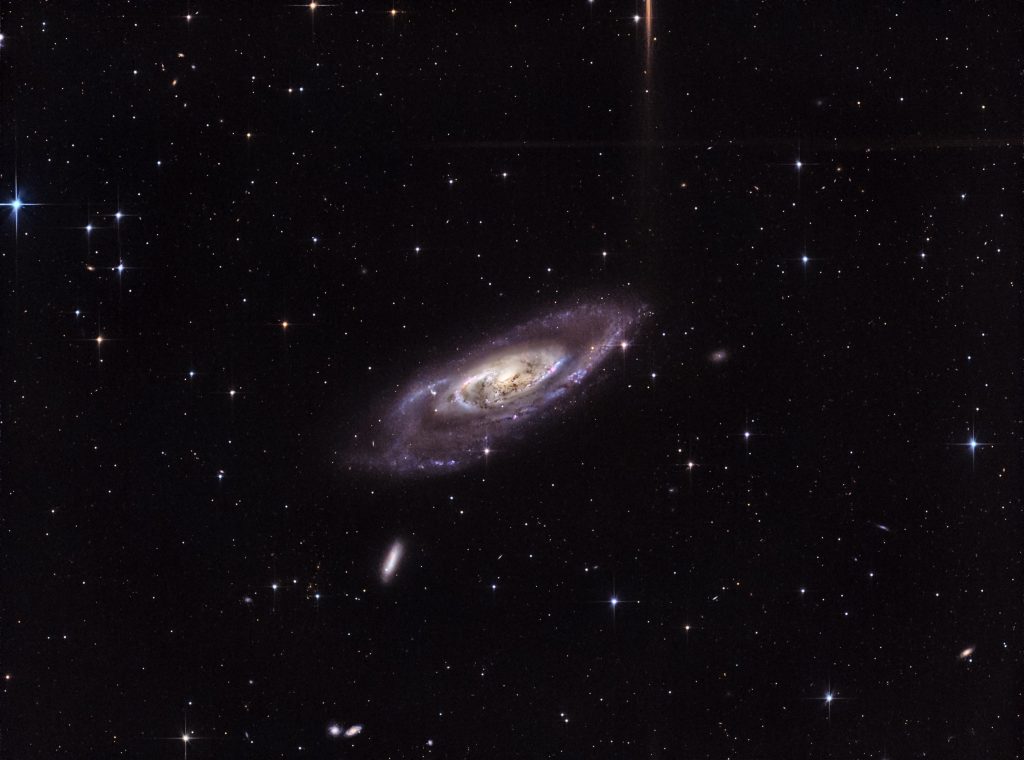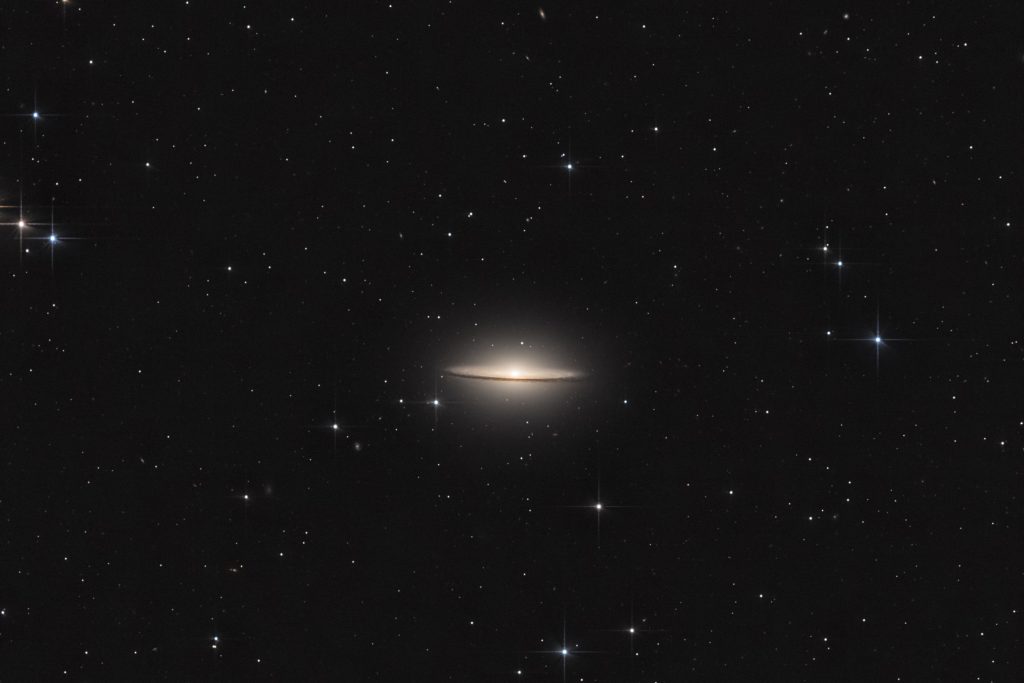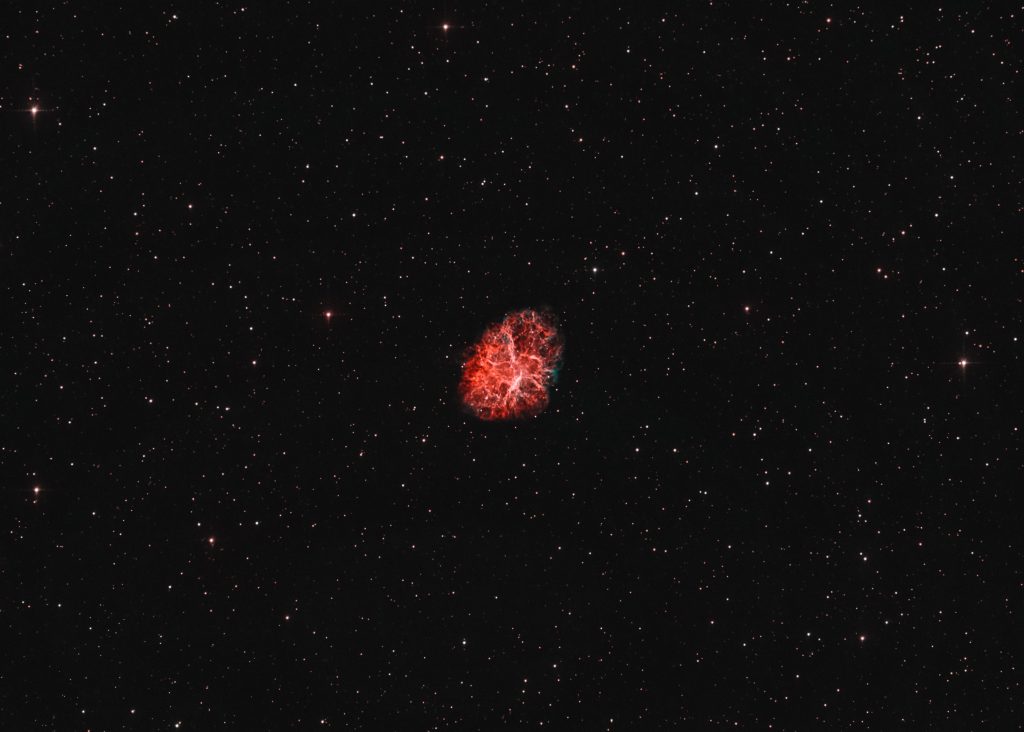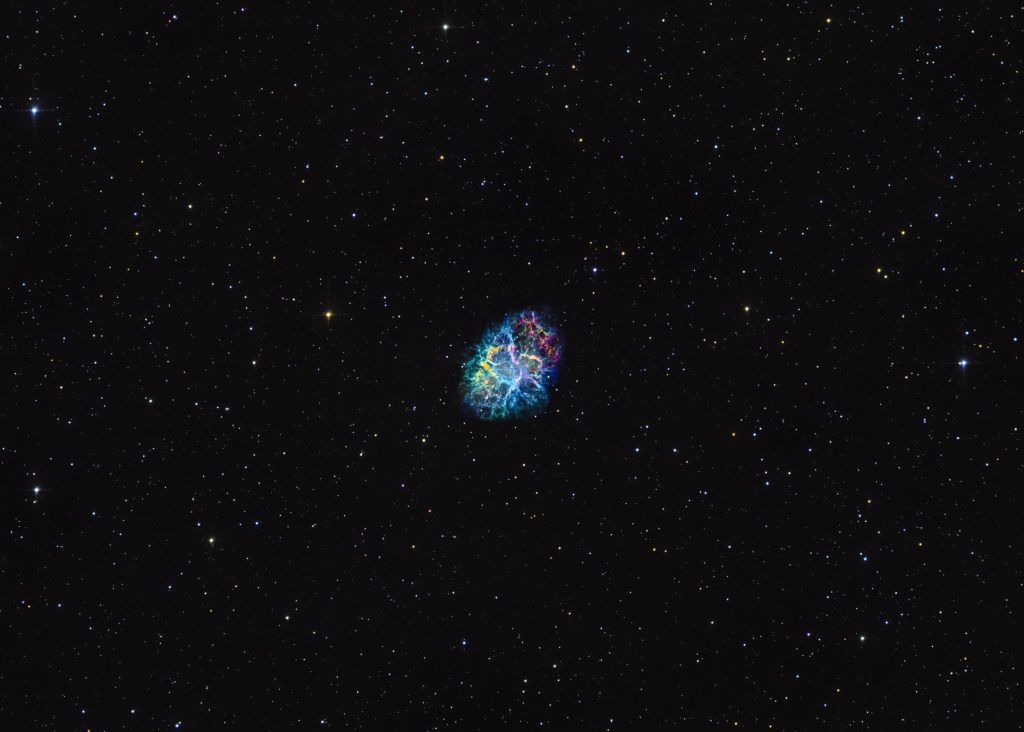Galactic season continues. This night I managed to capture many galaxies in one shot. Specifically, it’s Messier 59 Galaxy, located in the center, Messier 60 Galaxy at the top, two visually smaller galaxies – NGC 4606 and NGC 4607, located at the bottom right and NGC 4637, NGC 4638, located in the center left of the picture. All these galaxies are located in constellation Virgo and they are member of Virgo galactic cluster.
The picture is a stack of 54 pictures, each 5 minutes exposure time, i.e. 4.5 hours of total integration time.
Technical details:
| Telescope | Newton 254/1000 mm |
| Aperture | 254 mm |
| Focal length | 1000 mm |
| Mount | Gemini G53f |
| Autoguiding | ZWO 174MM, TS 60/240 mm |
| Camera | ZWO 071 Pro @-15°C |
| Corrector | GPU |
| Filters | IR UV cut |
| Exposure | 54x300s, Gain 94, bin 1x1, |
| Date | 2018-04-21 |

